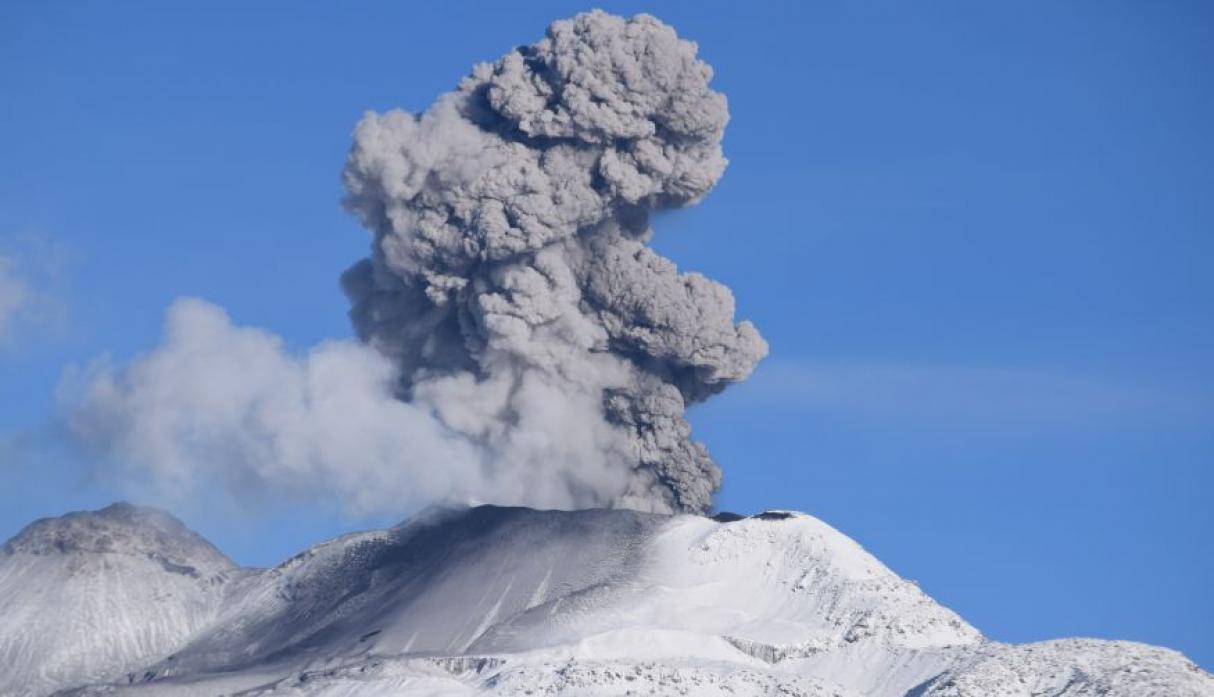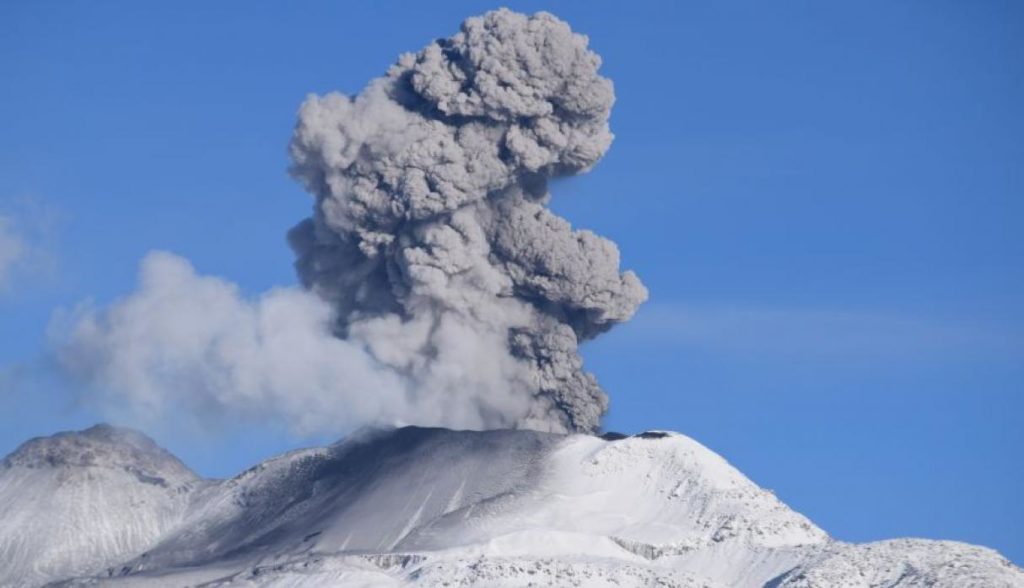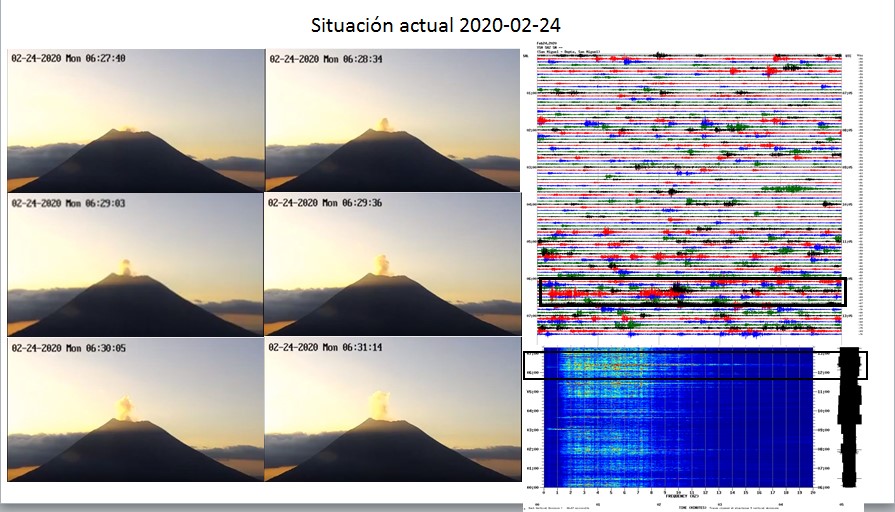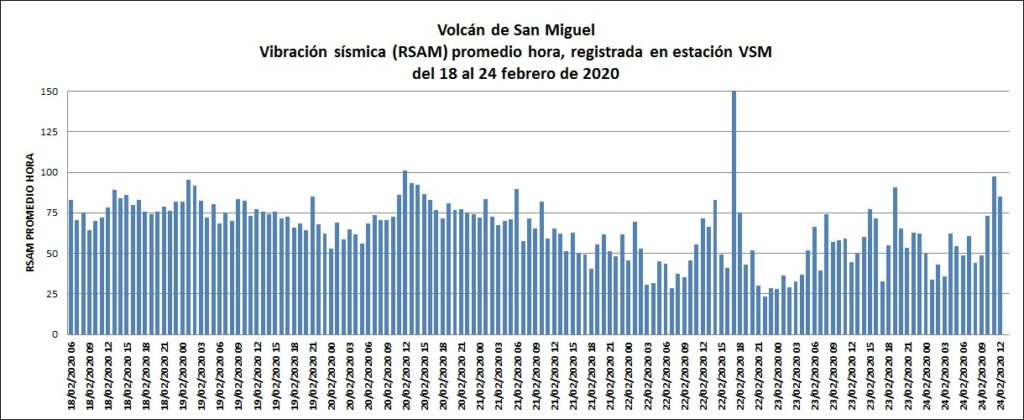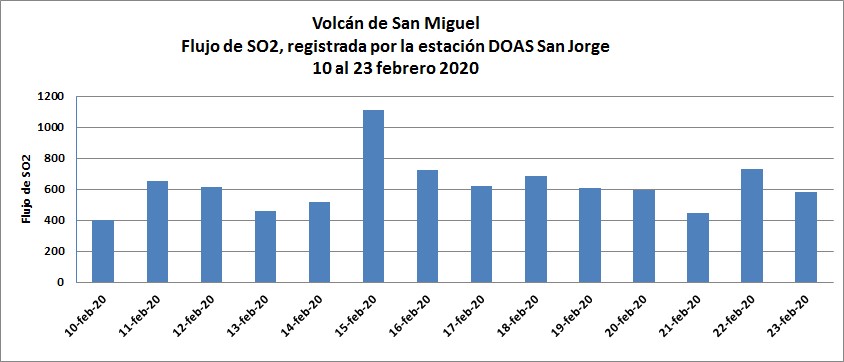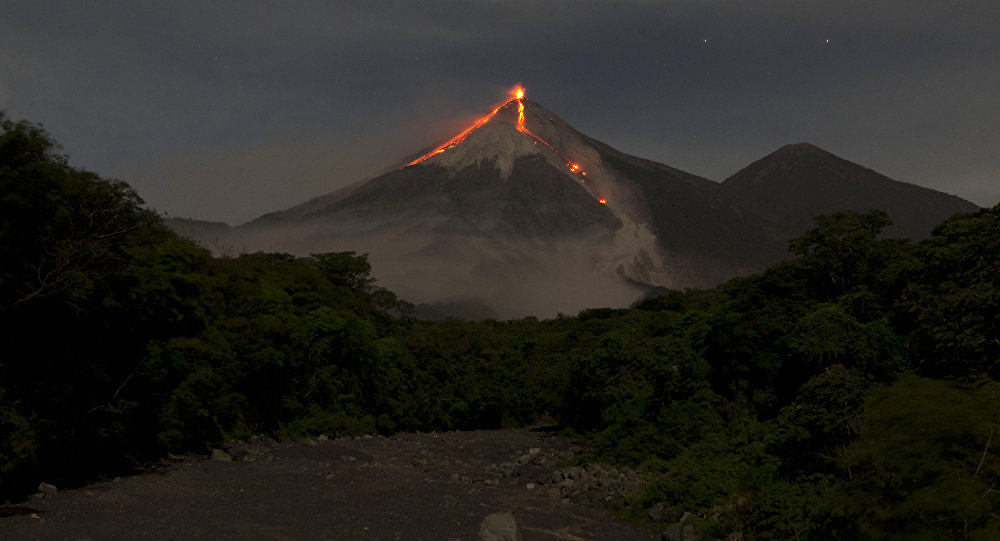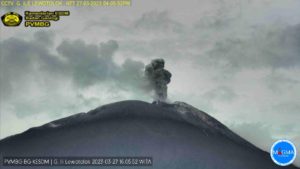February 25 , 2020.
Peru , Sabancaya :
Analysis period: February 17-23, 2020. Arequipa, February 24, 2020.
Alert level: ORANGE
The Peruvian Geophysical Institute (IGP) reports that the eruptive activity of the Sabancaya volcano has been maintained at moderate levels; that is to say with the continuous recording of moderate explosions and consequent emissions of ash and gas. Consequently, for the following days, no significant change in activity is expected.
The IGP recorded and analyzed the occurrence of approximately 782 earthquakes of volcanic origin, associated with the circulation of fluids (magma, gas, etc.) inside the volcano. On average, 16 explosions were recorded daily of medium to low intensity.
Monitoring the deformation of the volcanic structure does not record any significant anomalies. Visual surveillance made it possible to identify columns of gas and ash up to 3 km high above the summit of the volcano, which were dispersed in the South, South-West and South-East sectors of the Sabancaya. Satellite surveillance made it possible to identify the presence of 2 thermal anomalies of values between 2 MW and 3 MW, associated with the presence of a lava dome of approximately 280 m in diameter in the crater of the volcano.
On February 24 at 1:23 p.m., the IGP recorded and reported via the Volcanes Peru mobile application the presence of a lahar (volcanic mud flow), which descended the Huayuray-Pinchollo stream towards the Colca river, with probable effects on the main Chivay-Cabanaconde road.
Source : IGP.
Photo : Ingemmet
Peru , Ubinas :
Analysis period: February 17-23, 2020. Arequipa, February 24, 2020.
Alert level: ORANGE
The Geophysical Institute of Peru (IGP) reports that the eruptive activity of the Ubinas volcano remains at low levels. To date, the recording of earthquakes associated with the rise of magma to the surface is rare. There are weak and sporadic emissions of bluish gases (of magmatic origin) and water vapor. According to this scenario, the possibility of volcanic explosions and / or ash emissions is low.
The IGP recorded and analyzed a total of 103 seismic events associated with the dynamic behavior of the Ubinas volcano, with the predominance of Volcano-Tectonic (VT) type seismic signals, related to the fracturing of rocks inside the volcano. On average, 7 earthquakes were recorded per day with magnitudes below M1.9. The seismic activity linked to the rise of magma (hybrid type) has decreased both in number of events (4 daily earthquakes) and in energy.
Visual monitoring records slight emissions of volcanic gases and water vapor. Monitoring the deformation of the volcanic structure does not record any significant anomalies. MIROVA satellite monitoring did not record any thermal anomalies.
On February 24 at 3:52 p.m., the IGP recorded and reported using the Volcanes Peru mobile application the descent of a lahar (volcanic mud flow) through the Volcanmayo gorges. The event presented volumes considered moderate to high with an allocation of communication roads and agricultural land in the district of Ubinas.
Source : IGP.
Photo :Archive, Author unknown.
El Salvador , San Miguel ( Chaparrastique ) :
After the volcanic activity phase of 10.55 am Saturday 22, the San Miguel volcano showed a relaxation in its internal system, which lasted about 11 hours. After this period, the seismicity presented a change in its pattern. There is an increase in the number of earthquakes and small amplitude tremor signals (seismic vibrations), associated with periods of slight degassing (see Figure 1).
Figure 1. Changes in the seismicity of the volcano recorded from February 17 to 24.
The recording of the last earthquakes, shows very small magnitudes, not perceived by the population, followed by periods of tremors (Figure 2). During the last 24 hours, the seismic amplitude recorded in the VSM station, located in the upper part of the northern flank of the volcano, has shown values between 33 and 97 RSAM units, on average / hour, 150 units being normal ( see figure 3).
Figure 2. Sequence of degassing pulses observed this morning, linked to short periods of tremors and microseisms.
Until the time of publication of this report, the volcano had periods of slight degassing from its crater, observed at 6:30 a.m. today, a plume that reached approximately 400 meters high.
Figure 3. Behavior of the volcano’s seismic vibrations, in RSAM units, from February 18 to 24.
The flow of sulfur dioxide emitted by the crater of the volcano demonstrates the presence of the degassing observed, maintaining an emission rate similar to the previous days (Figure 4).
According to the evaluation of the volcanic activity, the current scenario could continue during the next days, without excluding that it could present a process of greater energy, which could generate higher columns with more ash dispersing following wind direction.
Figure 4. Flow of sulfur dioxide (SO2), emitted by the crater of the volcano, with slight fluctuations exceeding the threshold, between February 10 and 23.
The Ministry of the Environment and Natural Resources (MARN) provides 24/7 surveillance of the volcano and close communication with the Directorate General of Civil Protection and local observers. We call on residents, tourists and mountaineers and, in general, to stay away from the crater of the volcano because of the small explosions with ash fumes that it presents.
This report will be updated next Friday, February 28. In the event of a significant change in the activity of the volcano, a special prior report will be published.
Source: MARN.
Guatemala , Fuego :
Activity:
Presence of degassing fumaroles at an altitude of 4300 m which move towards the South and the South-West. 7 to 14 low to moderate explosions are generated per hour which expel columns of gray ash at a height of 4500 to 4800 m above sea level (14765-15750 feet) which disperse over 10 to 15 km towards the West and the South -Where is. At night and early in the morning incandescent pulses were observed at 200 – 300 m high with moderate avalanches around the crater, mainly towards the ravines of Seca, Taniluya, Ceniza, Trinidad and Las Lajas,
Low, moderate to strong rumblings are perceived, which cause moderate shock waves causing the houses near the volcano to vibrate. Sounds similar to train locomotives are heard at intervals of 4 to 6 minutes. There are falls of fine particles of ash in the villages of Sangre de Cristo, La Soledad, Yepocapa and others. An 800 m long lava flow advances towards Canyon Ceniza, with moderate to strong avalanches during its advance.
Source : Insivumeh .
Photo : Moises Castillo / Sputnik. ( Archives)

